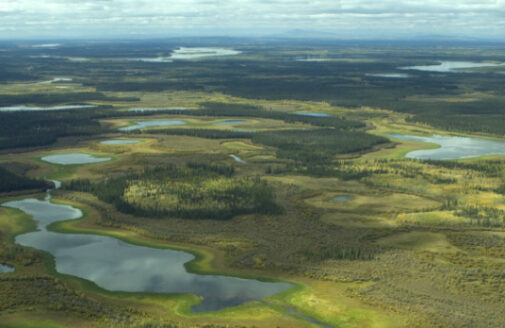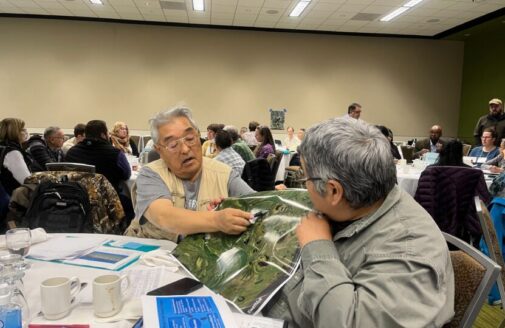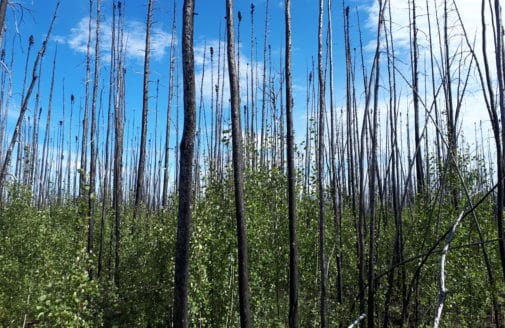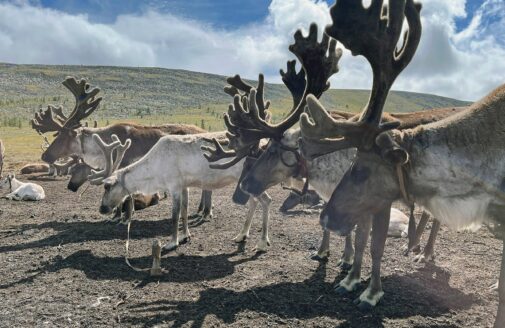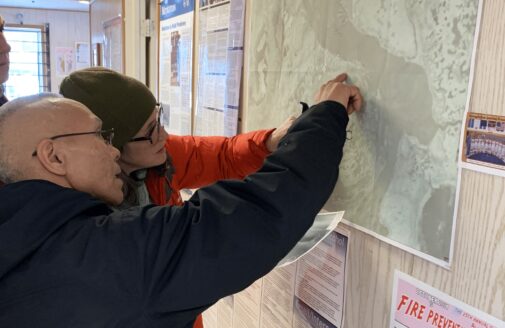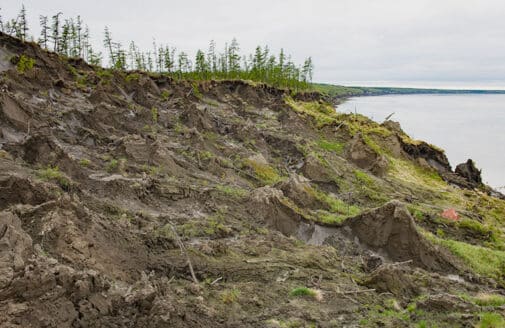How climate change has altered boreal fire regimes
Boreal fires are more frequent, burning more area due to climate change
Fire burning in the Yukon Flats National Wildlife Refuge, AK.
photo by Brendan Rogers
Fire is a necessary element in northern forests, but with climate change, these fires are shifting to a far less natural regime—one that threatens the ecosystem instead of nurturing it.
Boreal tree species, like black spruce, have co-evolved over millennia with a steady regime of low-frequency, high-intensity fires, usually ignited by lightning strikes. These fires promote turnover in vegetation and foster new growth. On average, every 100 to 150 years, an intense “stand-replacing” fire might completely raze a patch of forest, opening a space for young seedlings to take root.
But rapid warming in northern latitudes has intensified this cycle, sparking large fires on the landscape more frequently, jeopardizing regeneration, and releasing massive amounts of carbon that will feed additional warming. Here’s how climate change is impacting boreal fires.
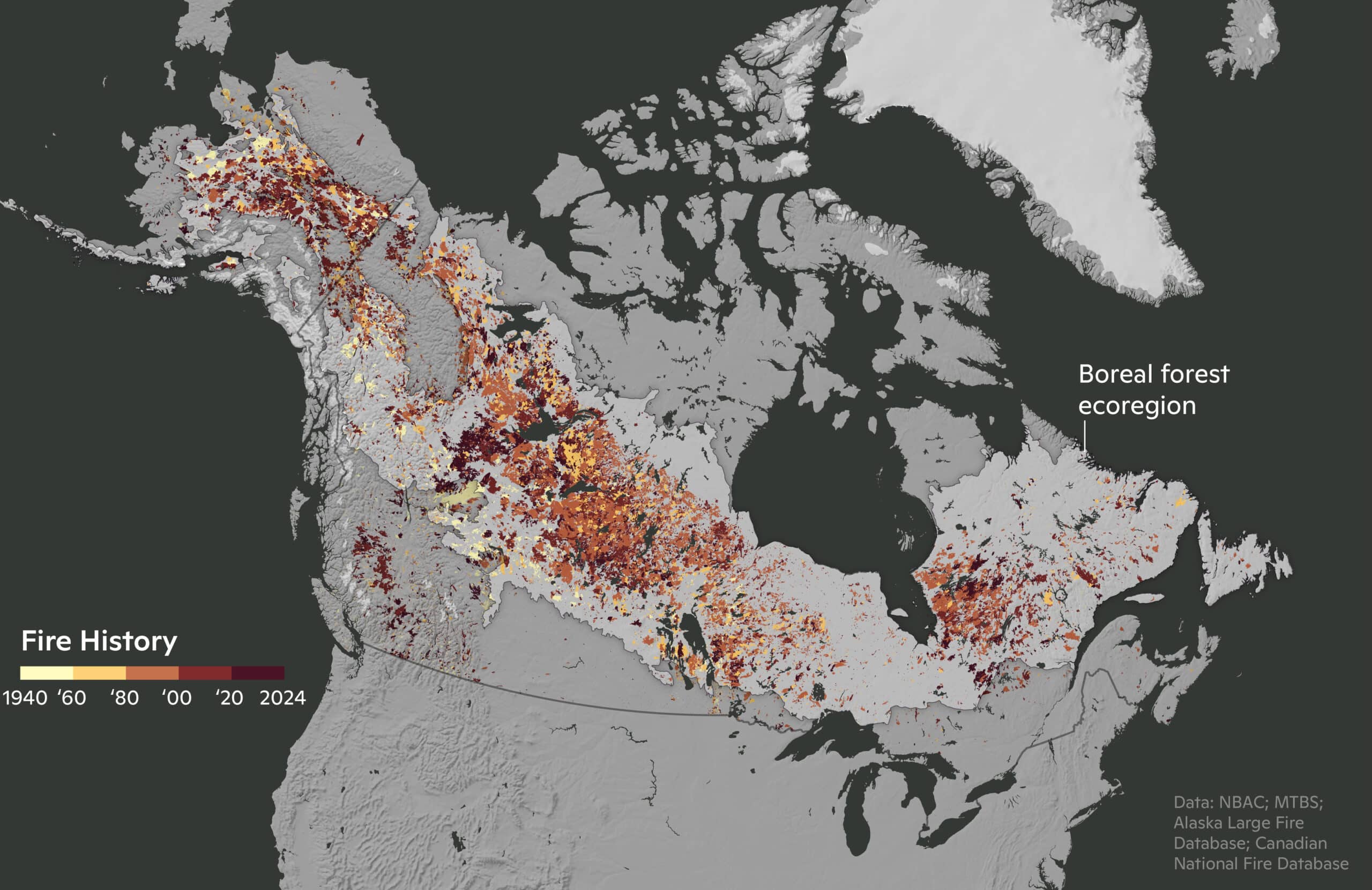
map by Christina Shintani
Climate impacts on boreal fire
In order for a fire to start, you need three things—favorable climatic conditions, a fuel source, and an ignition source. These elements, referred to as the triangle of fire, are all being exacerbated as boreal forests warm, resulting in a fire regime with much larger and more frequent fires than the forests evolved with.
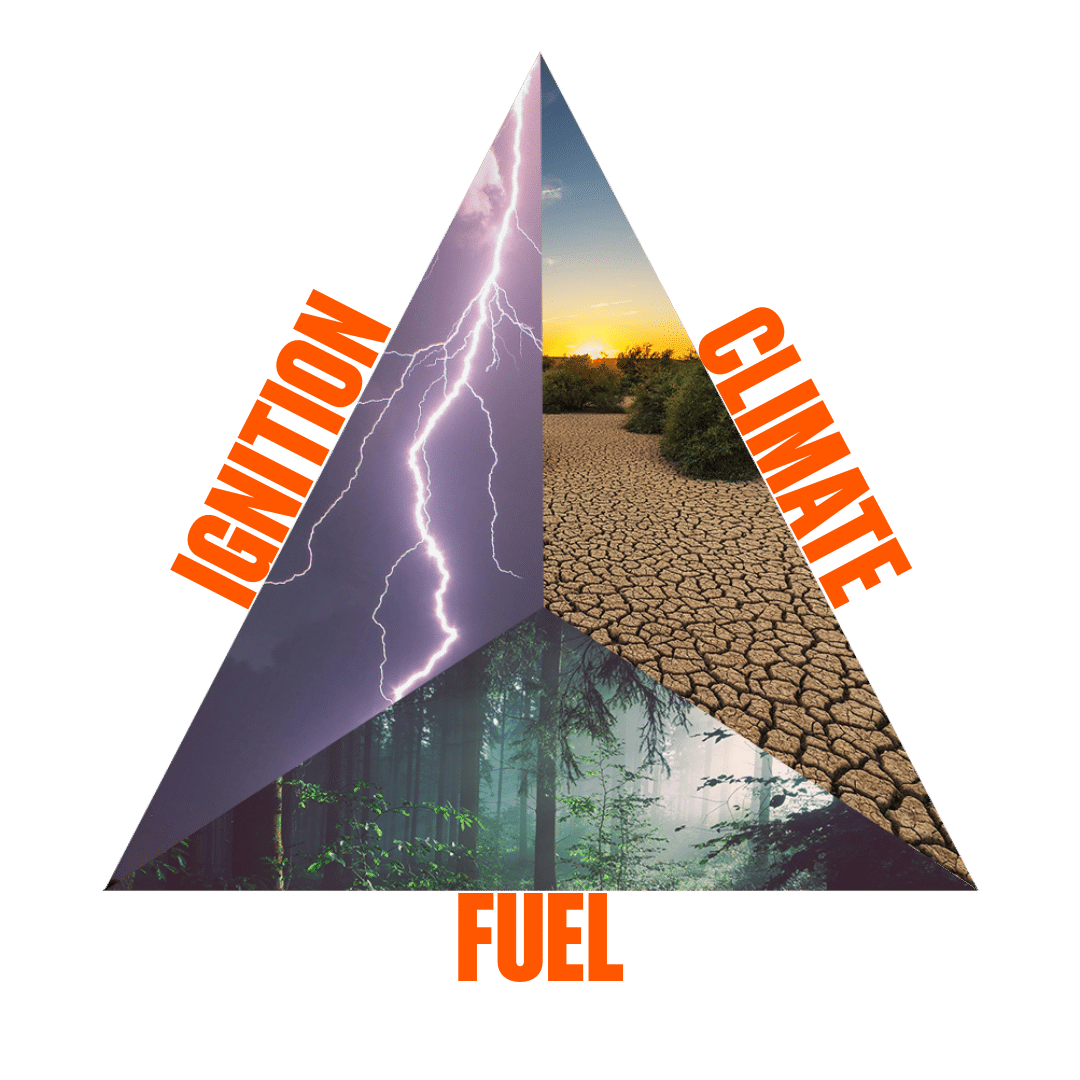
graphic by Tommy Hillmer
Climate conditions
Forest fires only ignite in the right conditions, when high temperatures combine with dryness in the summer months. As northern latitudes warm at a rate three to four times faster than the rest of the globe, fire seasons in the boreal have lengthened, and the number of fire-risk days have increased.
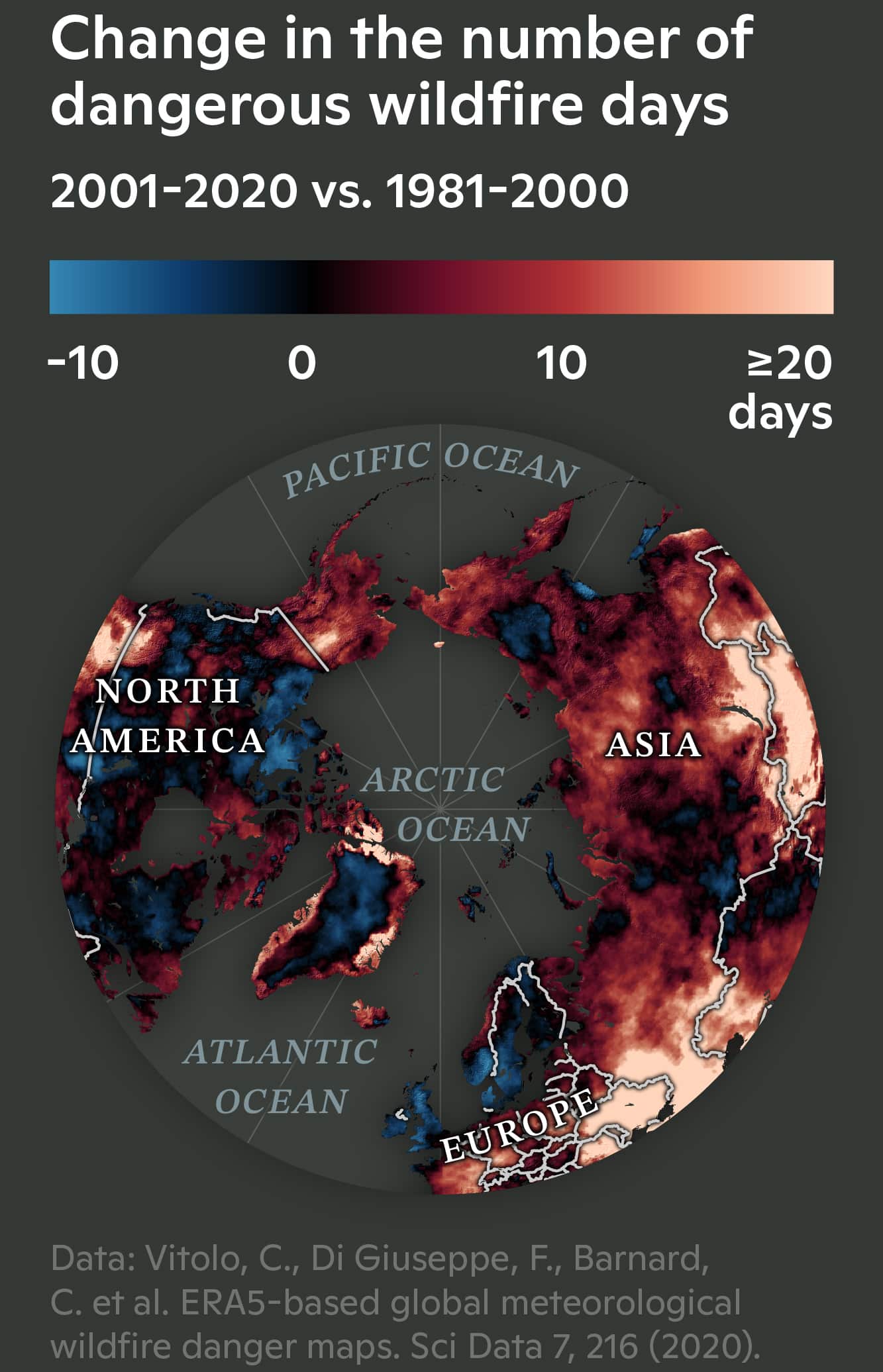
map by Christina Shintani
In some areas of high-latitude forest, climate change has changed the dynamics of snowfall and snow cover disappearance. The rate of spring snowmelt is often an important factor in water availability on a landscape throughout the summer. A study, led by Dr. Thomas Hessilt of Vrije University in collaboration with Woodwell Associate Scientist, Dr. Brendan Rogers, found that earlier snow cover disappearance resulted in increased fire ignitions. Early snow disappearance was also associated with earlier-season fires, which were more likely to grow larger—on average 77% larger than historical fires.
Fuel
The second requirement for fires to start is available “fuel”. In a forest, that’s vegetation (both living and dead) as well as carbon-rich soils that have built up over centuries. Here, the warming climate plays a role in priming vegetation to burn. A paper co-authored by Rogers has demonstrated temperatures above approximately 71°F in the forest canopy can be a useful indicator for the ignition and spread of “mega-fires,” which spread massive distances through the upper branches of trees. The findings suggest that heat-stressed vegetation plays a big role in triggering these large fires.
Warming has also triggered a feedback loop around fuel in boreal systems. In North America, the historically dominant black spruce is struggling to regenerate between frequent, intense fires. In some places, it is being replaced by competitor species like white spruce or aspen, which don’t support the same shaded, mossy environment that insulates frozen, carbon-rich soils called permafrost, making the ground more vulnerable to deep-burning fires. When permafrost soils thaw and burn, they release carbon that has been stored—sometimes for thousands of years—contributing to the acceleration of warming.
A burned stand of boreal trees.
photo by Kayla Mathes
Ignition
Finally, fires need an ignition source. In the boreal, natural ignitions from lightning are the most frequent culprit, although human-caused ignitions have become more common as development expands into northern forests.
Because of lightning’s ephemeral nature, it has been difficult to quantify the impacts of climate change on lightning strikes, but emerging research has shown lightning ignitions have been increasing since 1975, and that record numbers of lightning ignitions correlated with years of record large fires. Some models indicate summer lightning rates will continue to increase as global temperatures rise.
There is also evidence showing that a certain type of lightning—one more likely to result in ignition—has been increasing. This “hot lightning” is a type of lightning strike that channels an electrical charge for an extended period of time and tends to correlate more frequently with ignitions. Analysis of satellite data suggests that with every one degree celsius of the Earth’s warming, there might be a 10% increase in the frequency of these hot lightning strikes. That, coupled with increasingly dry conditions, sets the stage for more frequent fire ignitions.
Fire management as a climate solution
So climate change is intensifying every side of the triangle of fire, and the combined effects are resulting in more frequent, larger, more intense blazes that contribute more carbon to the atmosphere. While the permanent solution to bring fires back to their natural regimes lies in curbing global emissions, research from Woodwell Climate suggests that firefighting in boreal forests can be a successful emissions mitigation strategy. And a cost effective one too—perhaps as little as $13 per metric ton of carbon dioxide avoided, which puts it on par with other carbon mitigation solutions like onshore wind or utility-scale solar. It also has the added benefit of protecting communities from the health risk of wildfire smoke.
Rogers, along with Senior Science Policy Advisor Dr. Peter Frumhoff, and Postdoctoral Researcher Dr. Kayla Mathes have begun work in collaboration with the Yukon Flats National Wildlife Refuge in Alaska to pilot this solution as part of the Permafrost Pathways project. Yukon Flats is underlain by large tracts of particularly carbon-rich permafrost soils, making it a good candidate for fire suppression tactics to protect stored carbon.
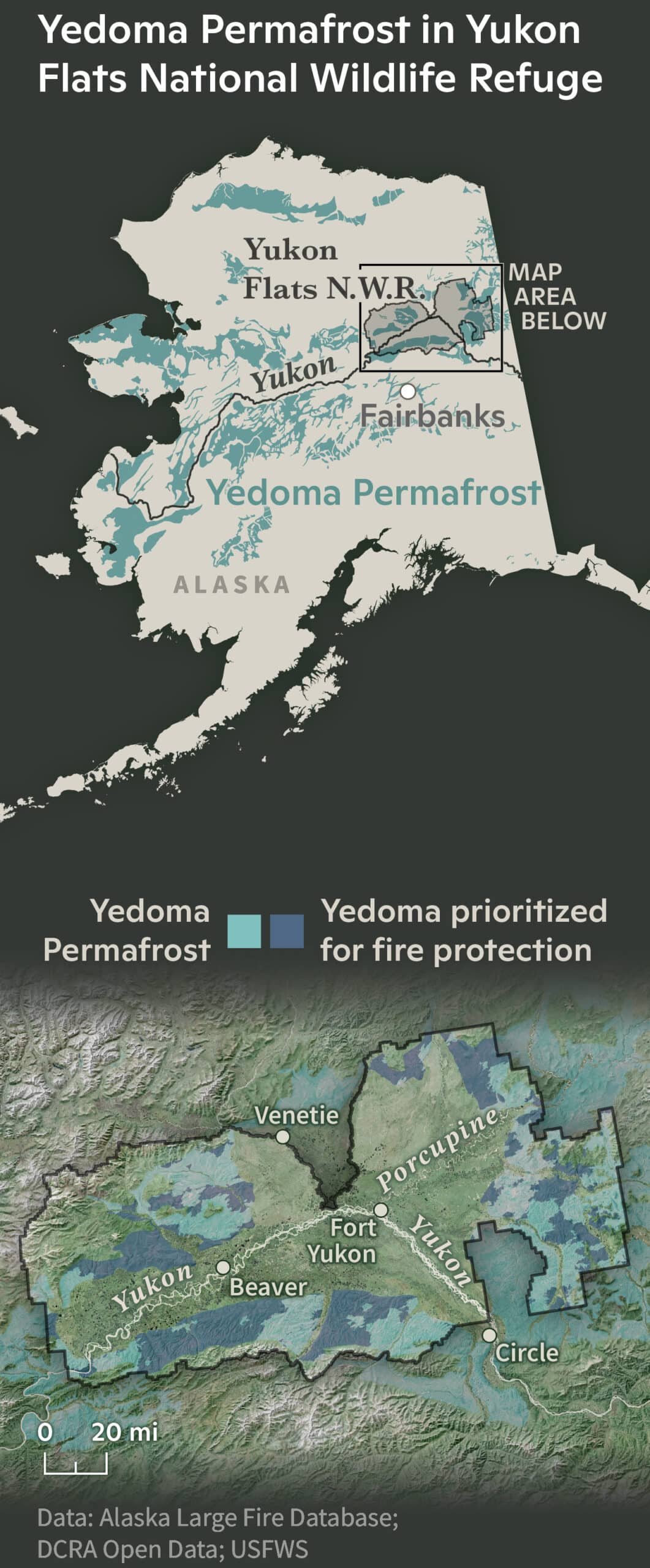
map by Christina Shintani
The project will be the first of its kind—working with communities in and around the Refuge as well as U.S. agencies to develop and test best practices around fighting boreal fires specifically to protect carbon. Broadening deployment of fire management could be one strategy to mitigate the worst effects of intensifying boreal fires, buying time we need to get global emissions in check.




